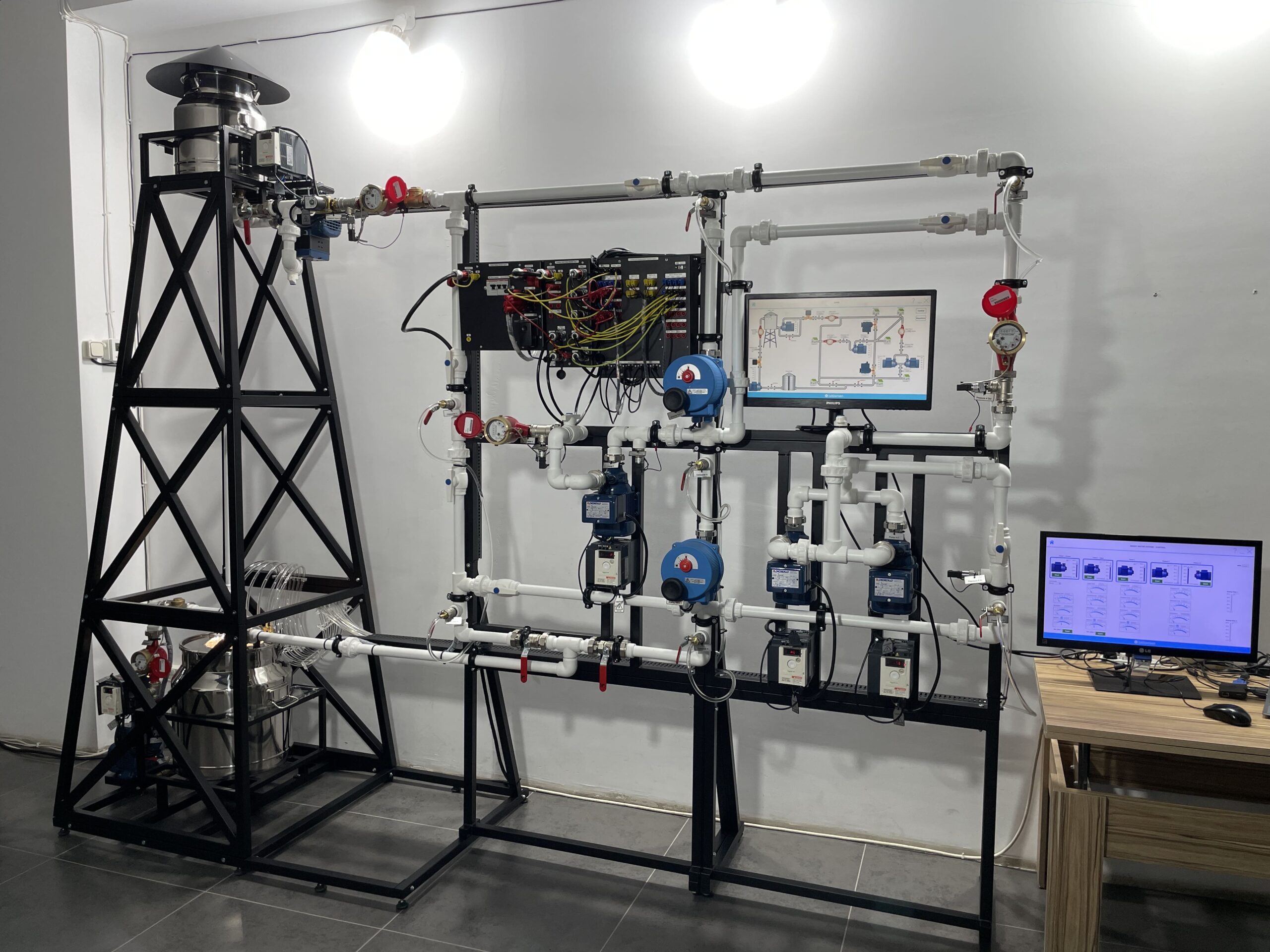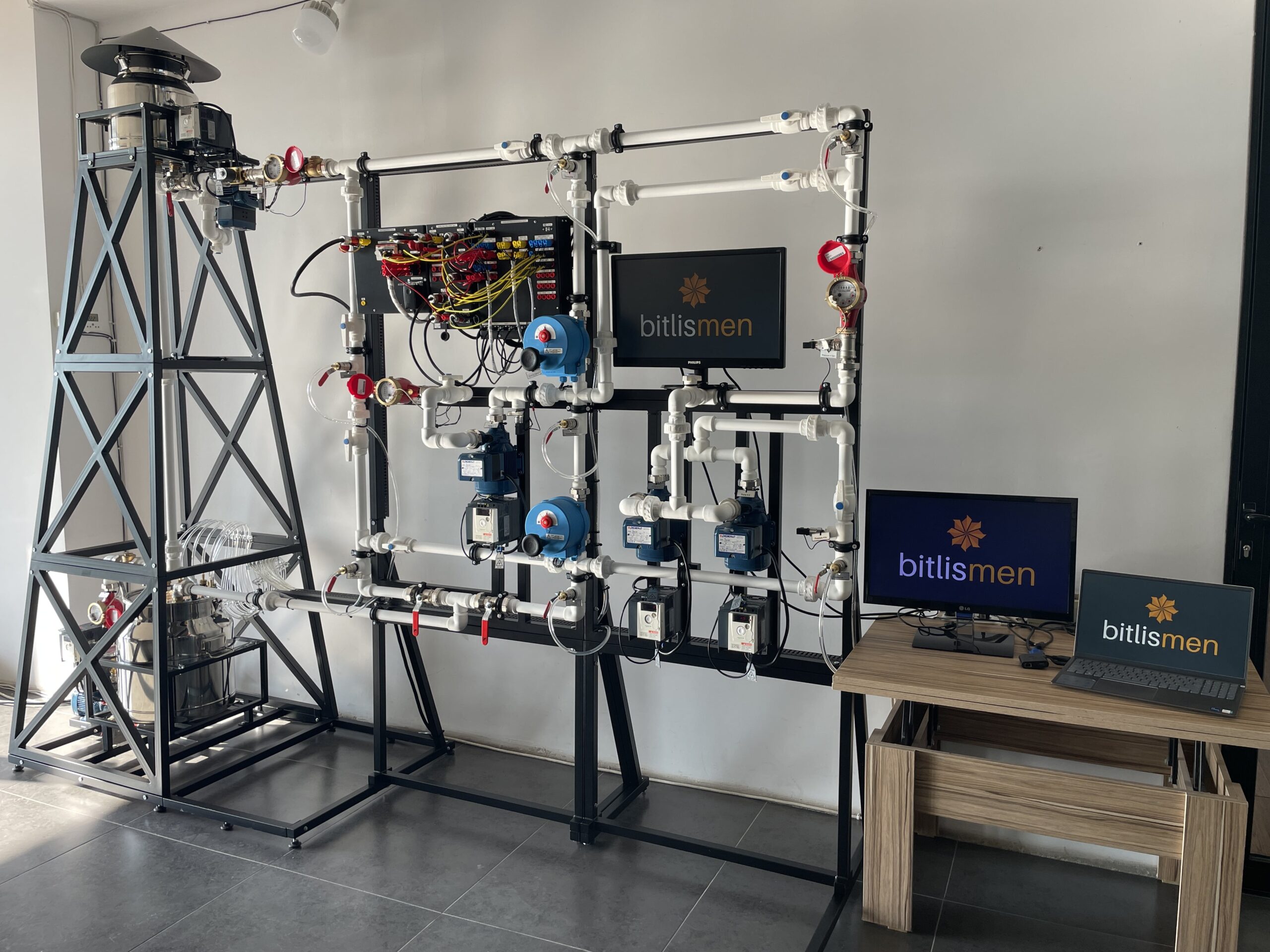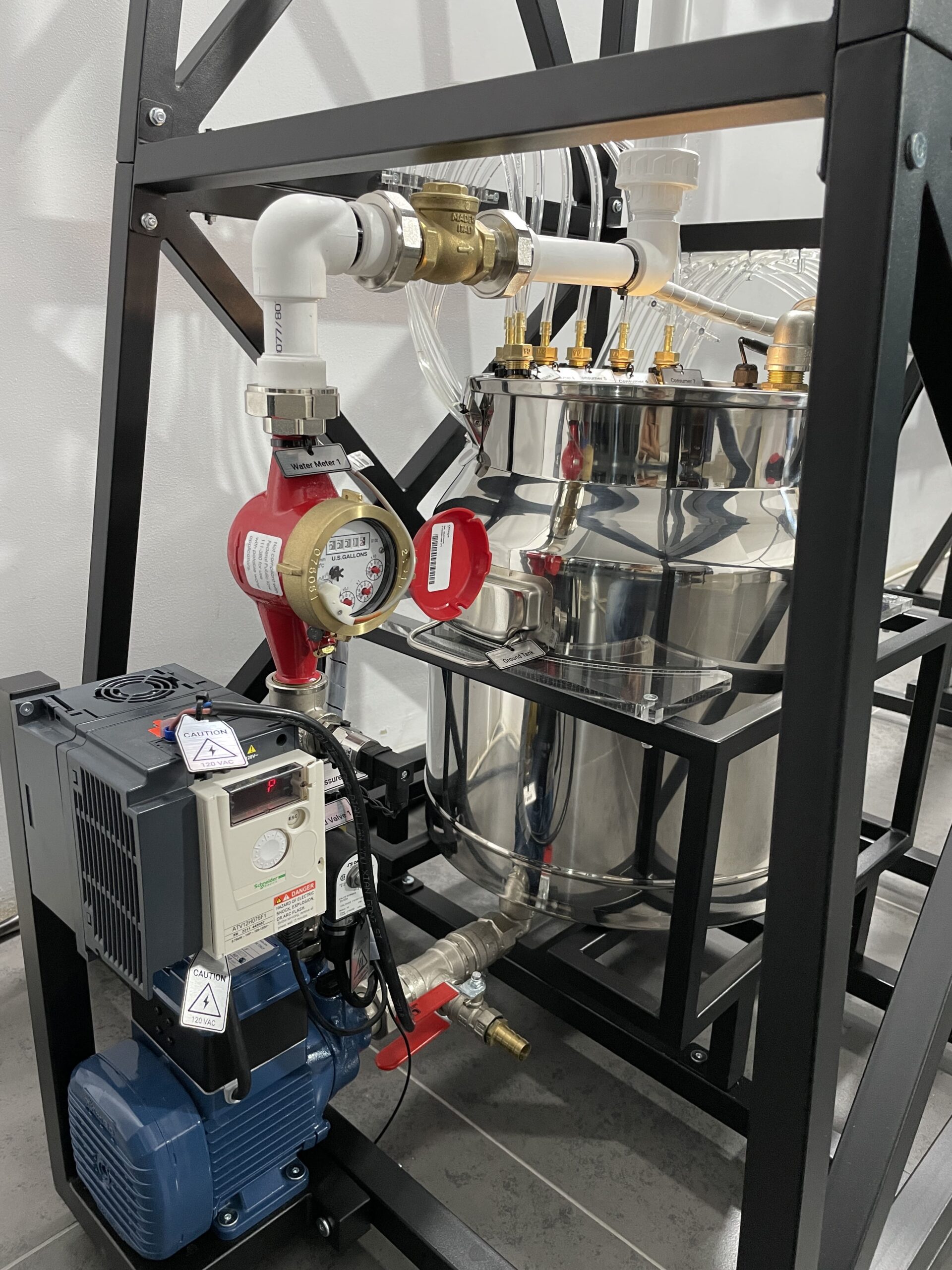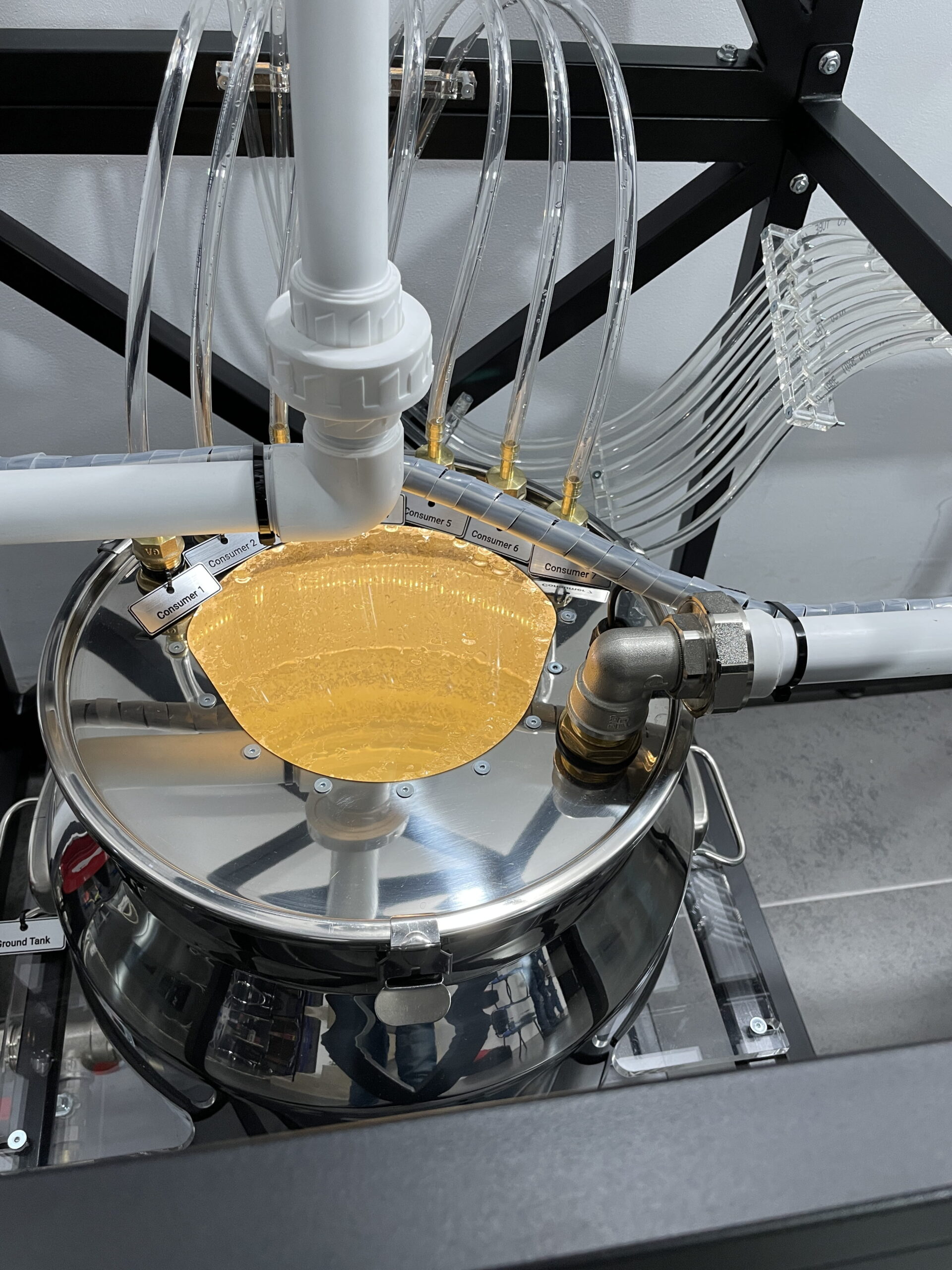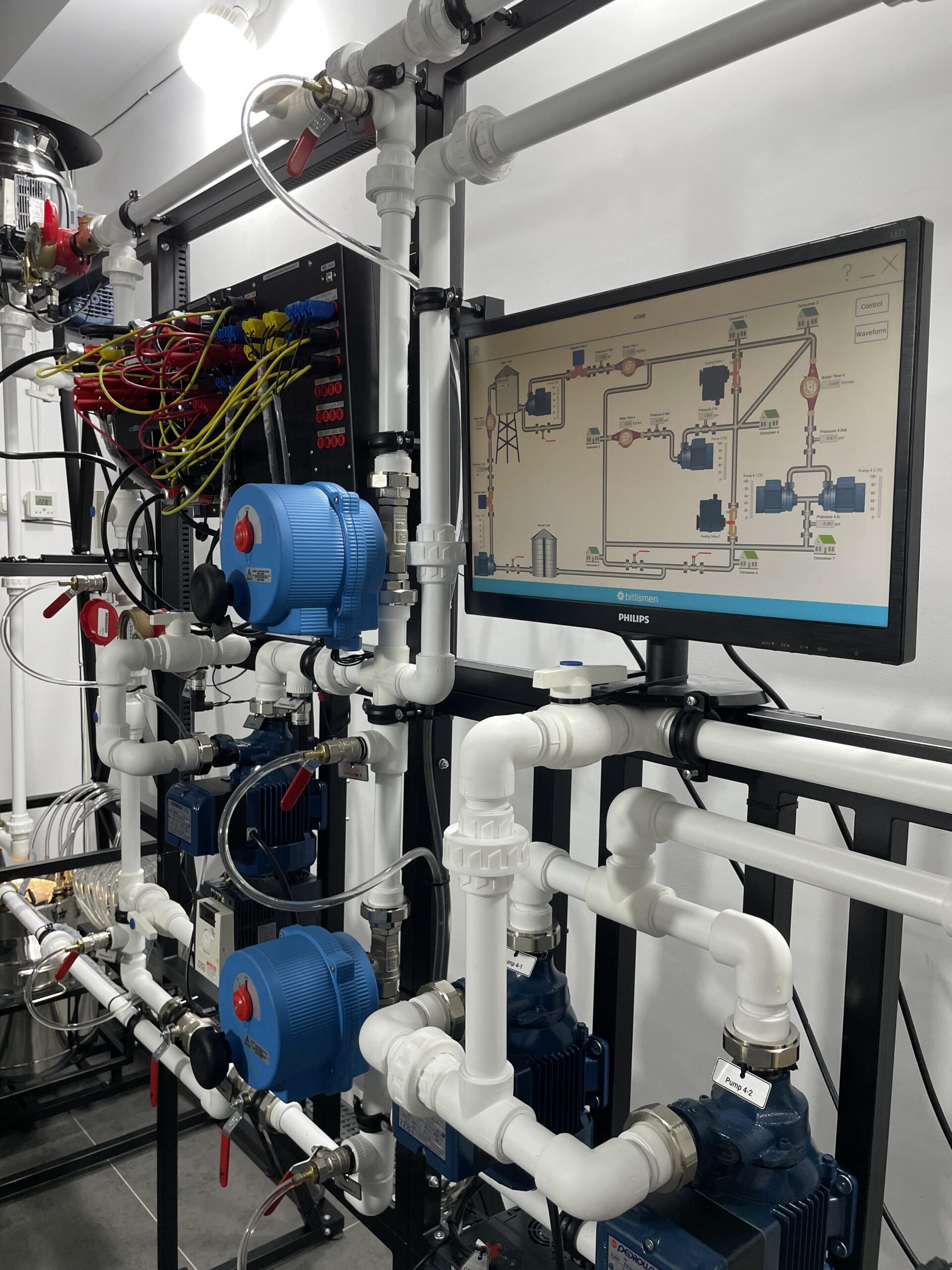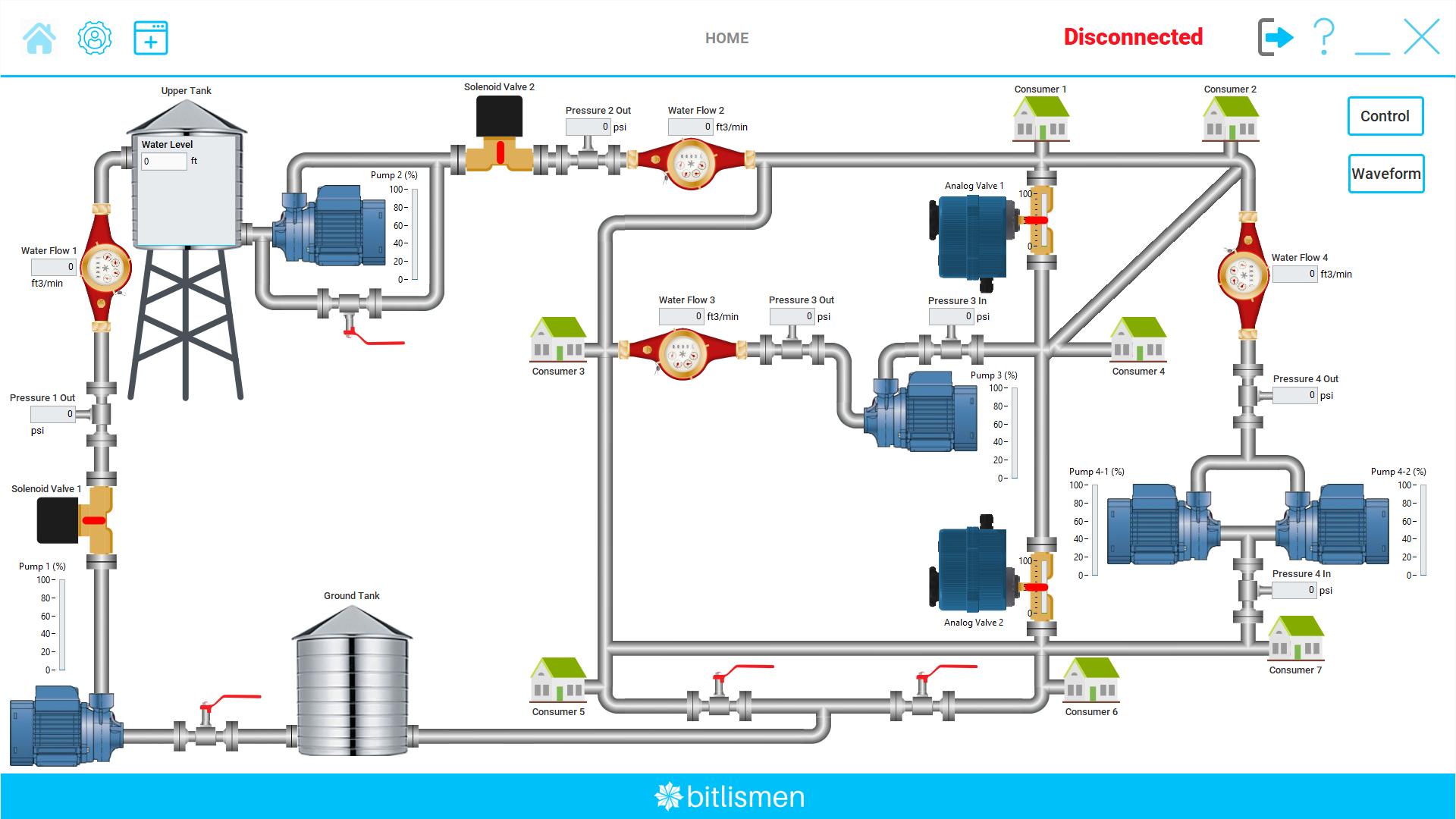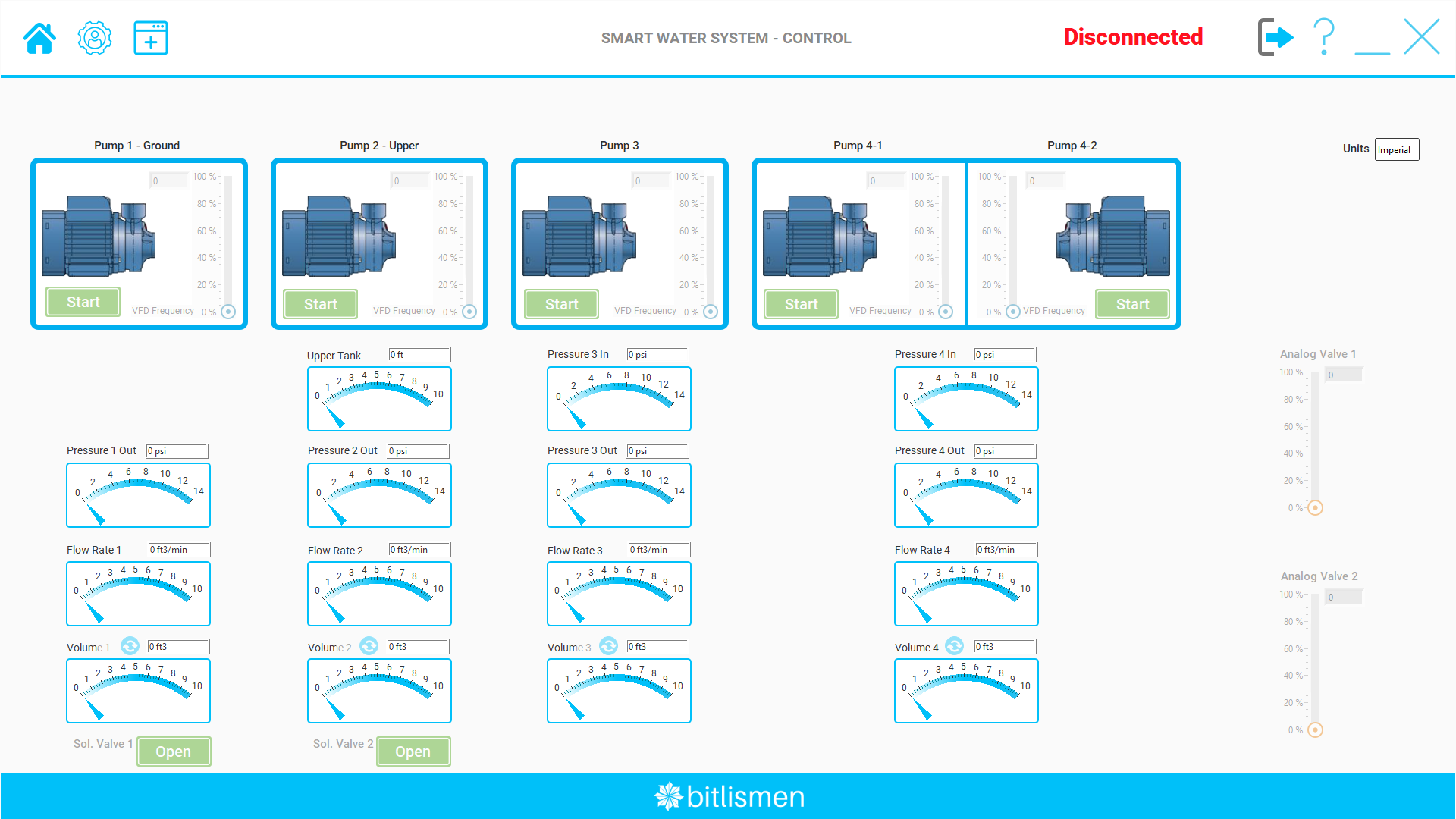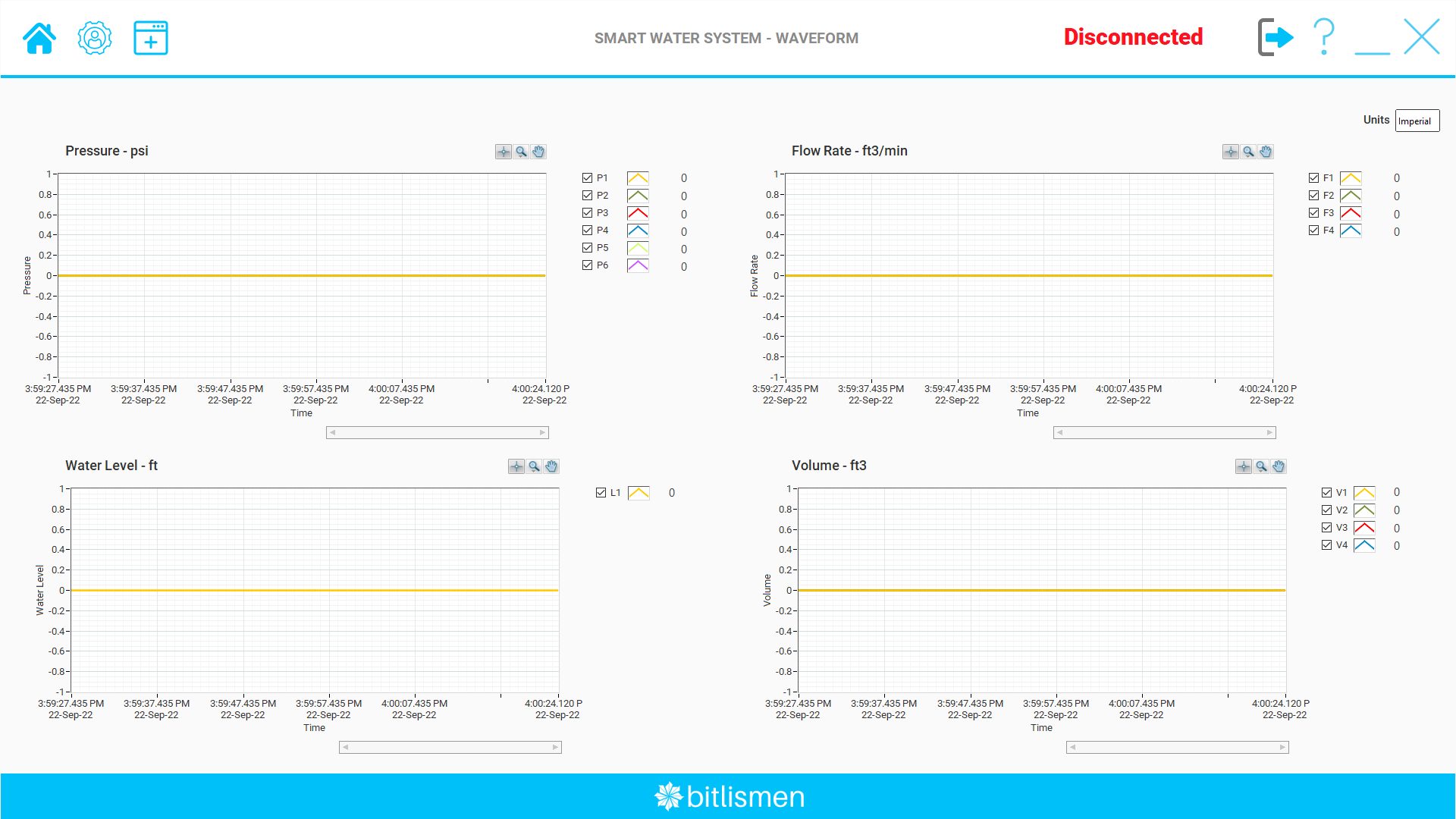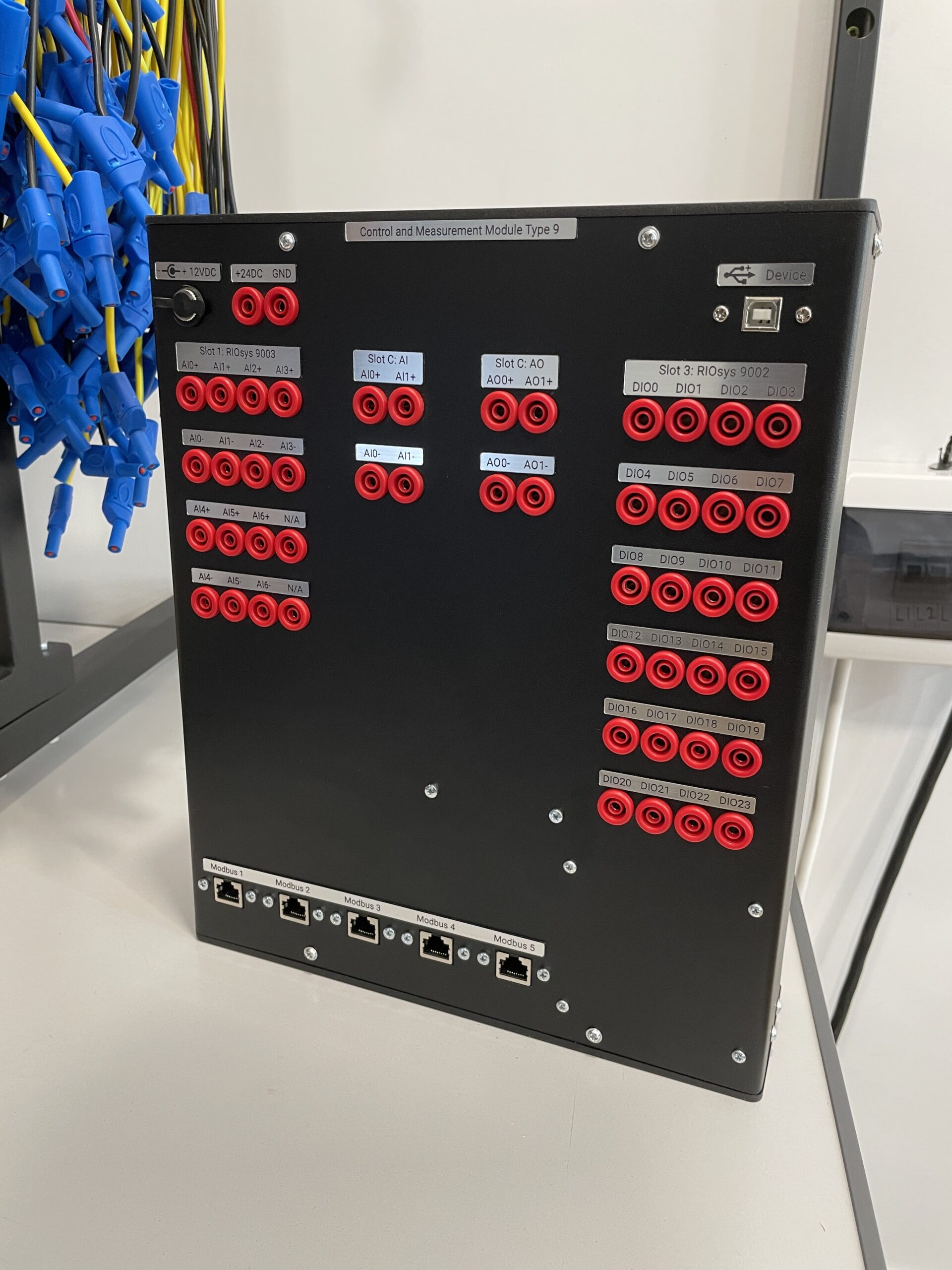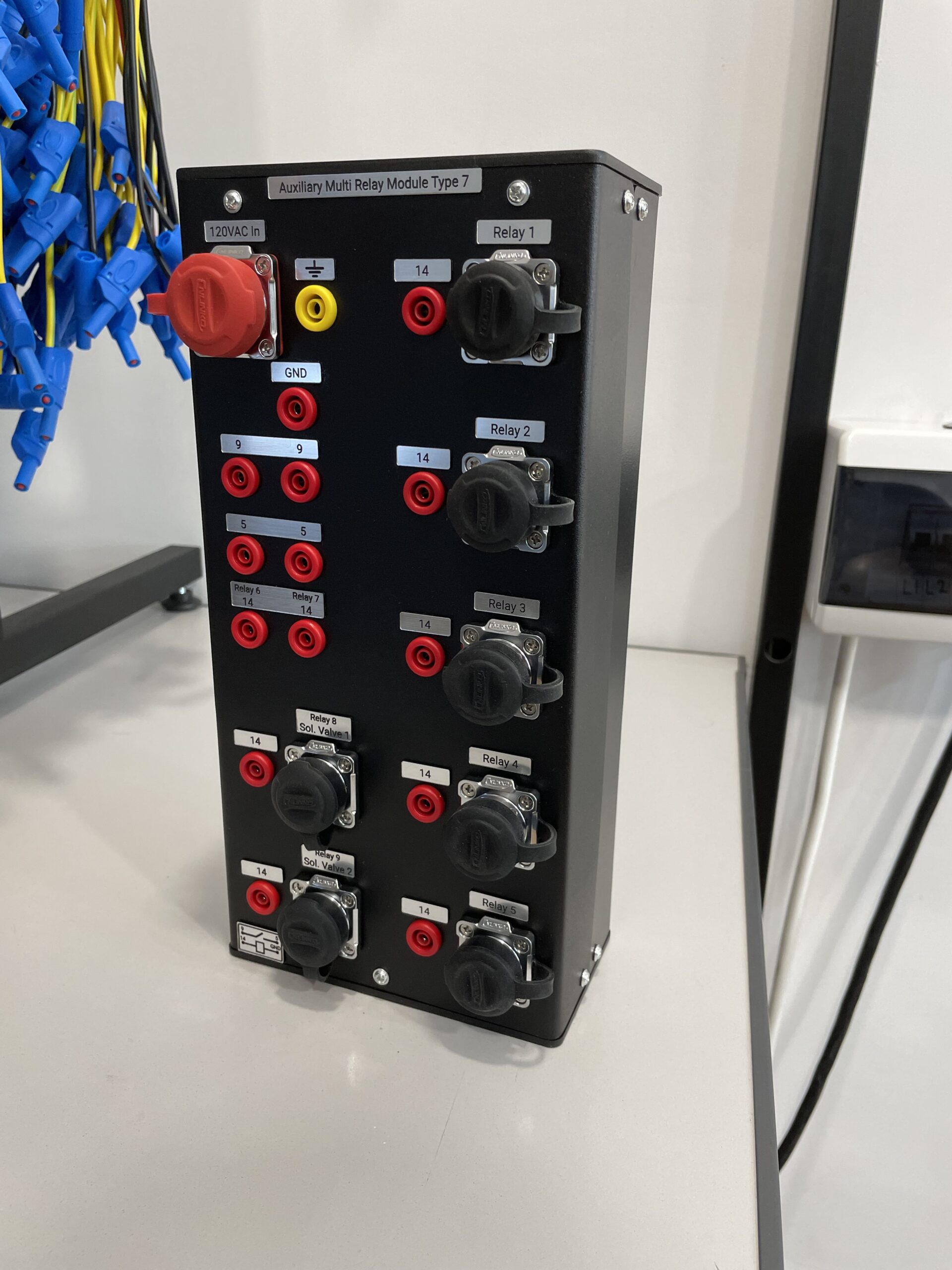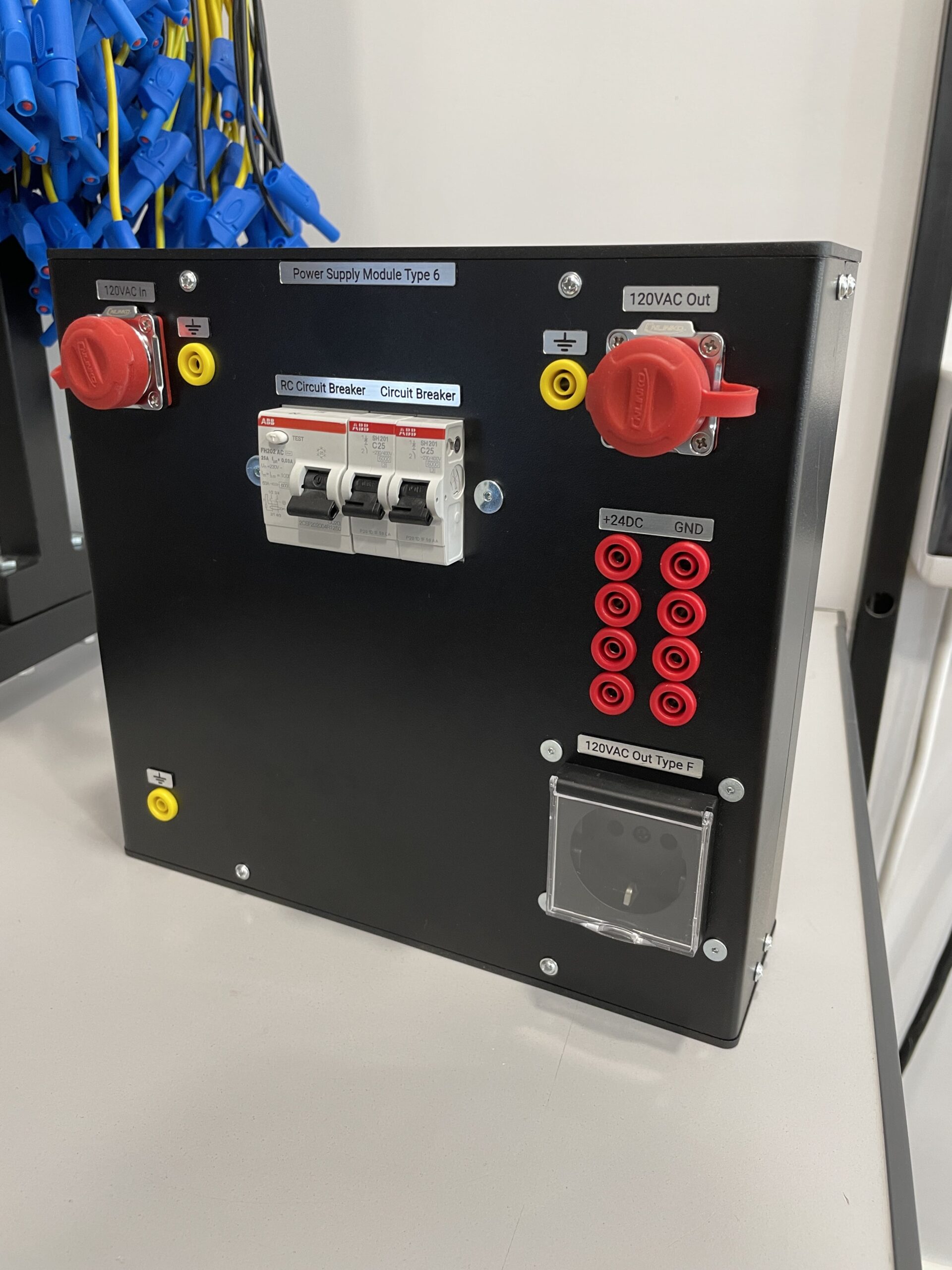SMART WATER DISTRIBUTION SCADA SYSTEM
The Smart Water Distribution SCADA System is a small-scale closed-loop model of a water distribution system of a city. It consists of the water tank, reservoir, single pumps, redundant pumps, analog and solenoid valves, water pressure, flow, and level meters. The system comes with SCADA software, which allows the users to monitor the entire system and implement remote control of the valves and the VFDs of the pumps. As it is seen from the system diagram, pump 1 pushes the water up to the upper tank. The upper tank has a water level meter to monitor the level in real time. There is one manual valve on the input of the pump and a solenoid valve on the output. There are also pressure and water flow meters on this branch. The upper tank is also equipped with a level switch that will automatically turn off the pump to avoid any overfill. On the output of the upper tank, there are two small branches. One of them goes through another pump, and the other bypasses the pump. This allows to have a pressurized flow (through the pump) or a gravity flow (bypassing the pump). On the output of this small branch, there are two bigger branches. On each branch, there are outputs that simulate consumers. There are also water flow meters, pumps, and pressure meters on the input and output of the pumps to measure the pressure difference. The analog valves allow to have control over the openness of the valve, thus making it possible to have different water flows through different sections of the branches. In one of the branches, there is a redundant pump, that allows showcasing the uninterrupted water supply even if one of the pumps fails.

